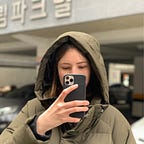Soil: The exploration phase.
Design an experience that explores planetary soil dependence.
Group members 🤝: Sebastian Ervi, Giada Han, Zhaolu Song, Maria Shuttleworth
<<< Previous project found here: Memory: The Misinformation Comic
Before this project started I hadn’t given soil much thought save for wanting a house plant, or making sure it doesn’t get on my coat if I’m sitting on the grass. This project served as a wake-up call for our group (and I’m pretty sure the rest of the class too) as we found out we don’t actually have that much time left before soil is irreversibly damaged.
Research methods.
We were told to used two research methods for this project:
- AEIOU
- Speed Dating
We begun by going away and brainstorming what soil means to us.
We found that we had some overlapping topics: soil degradation and exploitation, and decided that highlighting these two would be the best way of showing where we (humans) are going so wrong.
“The disconnection between humans and soil could have important consequences” (Li et al, 2018).
AEIOU.
Giada did her AEIOU research in Holland Park, and Sebastian and I went to Stave Hill Ecological Park.
We wrote down a list of things we wanted to find(amount of organisms & earthworms in the soil + look at plant vigour) and then headed out to explore. Because it’s a public park we couldn’t dig to check for things like root health and soil compaction, so instead we lifted up a log to count the amount of things thriving. I also took a small sample of soil with a spoon, and put it into a zip-lock bag. Upon checking it when I got home, I found 4 tiny worms in it! 🐛
We wrote up our research into several diagrams:
In each diagram we wrote up the Activities, Environment, Interactions and Objects for each User we found (humans, dogs, birds, insects, mushrooms, earthworms, squirrels and fish).
We found that human rubbish appeared the most consistently throughout the research, being an Object that each User interacted with (even the fish in the pond).
This is problematic; we’ve created this problem for other animals and organisms, hoping that they’ll adapt.
We forget that we depend on the well-being on the soil as much as other animals/organisms do. The planet cannot function without a healthy soil-ecosystem; Soil is the medium connecting interdependent living beings together. Without it functioning, all living things suffer.
“Biodiversity loss and climate change are two of the most pressing challenges of our time, and soil biodiversity is part of the solution to both” (OOPEU, 2010).
A world without soil.
How would we survive without soil? We wanted to imagine a possible future where it’s either completely gone or nutritionally devoid — either way a future in which we have to use an alternative method of producing food.
A tutorial with John left us thinking about narrowing this topic down to a specific place, e.g. what does this look like in a farm, or an allotment? We also needed to consider how to become more aware of the soil — to make the thing that we don’t see, visible.
Storytelling.
We each came up with 3 ideas to bring to our next meeting.
After presenting our ideas to each other in a zoom call, we chose our favourites and created 3 storytelling comics to show the class.
The presentation.
We presented our research and our storyboards, showing the class what we had come up with.
People mainly agreed on liking the first story (the flower breakup) and the last one (how the soil feels) the best. They felt they could relate to the first one the most , making its impact on them stronger. However they added that having a “soil experience” like in the last comic would be equally impactful as it’s making something invisible, visible.
They felt though like the last idea could be expanded upon; perhaps the soil could be located somewhere specific e.g. a farm, forests — how do these kinds of soils feel? Should we give them emotions?
Our final thoughts were:
- We need to think about more scenarios where the human aspect is highlighted.
- Create a believable reality.
- Could possibly design an artefact in the future: a future where soil is history e.g. the new dinosaurs.
Part 2 of this project in my next post: Soil: The Museum.>>>
References.
- Ardern, J., 2019. Mitigation Of Shock (London) — Superflux. [online] Superflux. Available at: <https://superflux.in/index.php/work/mitigation-of-shock/#> [Accessed 3 December 2020].
- BBC, 2020. Journey To The Centre Of The Earth. [online] BBC.com/Future. Available at: <http://www.bbc.com/future/bespoke/story/20150306-journey-to-the-centre-of-earth/index.html> [Accessed 33 December 2020].
- Li, G., Sun, G., Ren, Y., Luo, X. and Zhu, Y., 2018. Urban soil and human health: a review. European Journal of Soil Science, 69(1), pp.196–215.
- WWF, 2018. Soil, The Indispensable Dirt.. [online] Medium. Available at: <https://medium.com/wwftogetherpossible/soil-the-indispensable-dirt-c1f2314efc38> [Accessed 2 December 2020].
